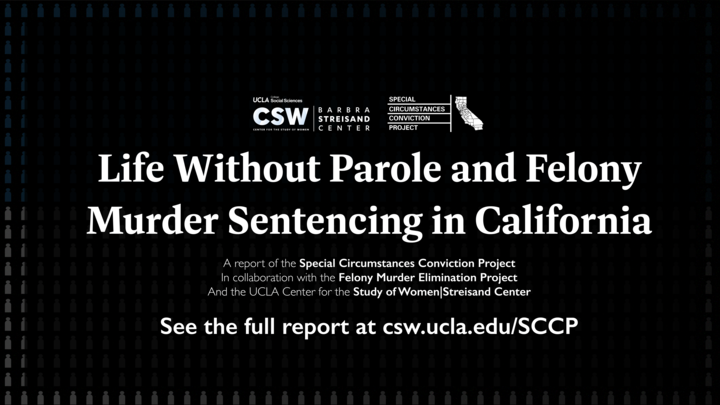Report: Life Without Parole & Felony Murder Sentencing in California
FMEP collaborative report indicates need for reevaluation of commonly held beliefs regarding LWOP sentences in California

"Convictions for Life Without Parole and Felony Murder Sentencing in California," a recent report created by the Special Circumstances Conviction Project in collaboration with the Felony Murder Elimination Project and the UCLA Center for the Study of Women|Streisand Center, seeks to understand how thousands of people in California have been sentenced to life in prison without the possibility of parole in the hope that this analysis allows increased insight into the group of people serving this sentence.
Despite the magnitude of a sentence of Life Without Parole and its implications for California’s communities, no comprehensive compilation or analysis existed of the specific convictions leading to the imprisonment of those serving LWOP or how factors such as race, age, and gender affect sentencing outcomes. This study finally examines the cases in which individuals were sentenced and discovers that more than half of those sentenced to LWOP were convicted with no required finding by a DA that they intentionally perpetuated a death, and also details how factors such as race, age and gender play a disturbing role in sentencing outcomes.
Some significant findings from the report:
- The special circumstance that was most often used pertains to felony murder, used in 52% of all cases resulting in an LWOP sentence. Unlike the majority of other special circumstances (examples; death of a peace officer, murder to prevent lawful arrest, murder of an individual based on their race, color, religion, nationality, or country of origin) felony murder does not require any proof that a person caused a death or intended to cause a death, only that they were a major participant in a felony where a death occurred, and that they acted recklessly.
- Black individuals make up 5% of the state’s population, yet account for 42.7% of individuals convicted of felony murder.
- Almost half of people who were sentenced to LWOP through felony murder for offenses that took place when they were under the age of 21 are Black.
Ultimately, while the mainstream media, conservative politicians, and the public at large categorize individuals serving LWOP as the “worst,” this rhetoric does not survive a review of the data. Statistical evidence clearly demonstrates that the most common special circumstance used as a sentencing enhancement is the one that requires the lowest degree of culpability: felony murder.
Read and download the report titled "Convictions for Life Without Parole and Felony Murder Sentencing in California" from the Resources section of our website.










